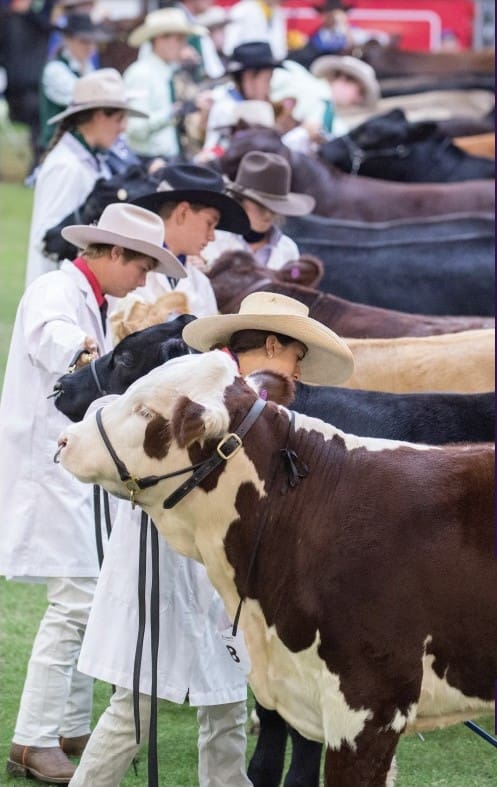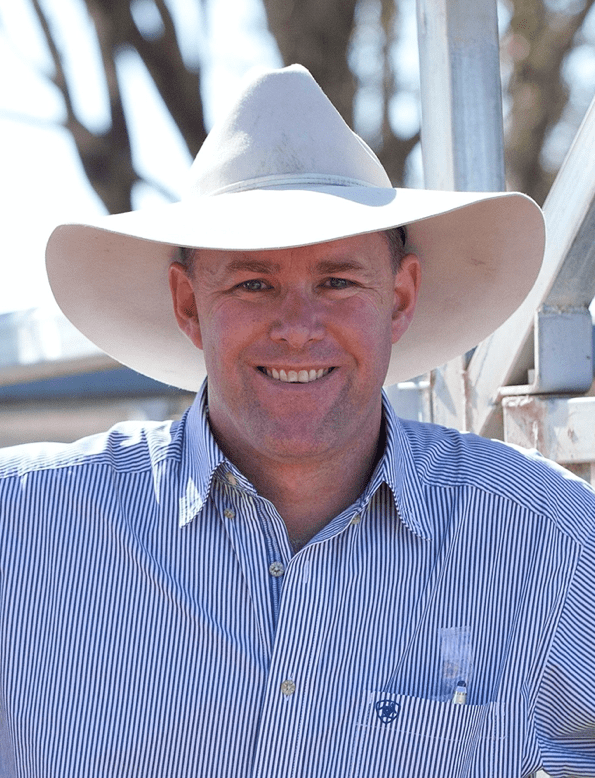The 2024 Sydney Royal Easter Show ended yesterday.
The earlier part of the show saw stud cattle from more than a dozen breeds exhibited and judged, with animals that had been entered from most Australian states recognised with ribbons and accompanying acclamation.
 Underlying the judging this year is a sense for many that there is still the judging that will take place at Beef 2024 in Rockhampton in a month’s time, and the chance to see who will potentially gain national and international recognition for their livestock.
Underlying the judging this year is a sense for many that there is still the judging that will take place at Beef 2024 in Rockhampton in a month’s time, and the chance to see who will potentially gain national and international recognition for their livestock.
A lead-up to the stud beef judging at Sydney’s Royal Easter Show is the led steer and carcase classes.
While there is much attention given to the parading and judging, a key benefit from the competition is the access to carcase feedback data and potentially the chance to consider the event as a snapshot, providing some points for breeders and others in the industry to ponder and potentially address into the future.
In theory, the RAS of NSW Steer competition is a unique benchmark for seedstock breeders.
The Sydney competition insists that led steer entries be purebreds only. Unlike other major competitions where led steers are generally crossbreds, and often bred with the goal of winning hoof and/or hook steer ribbons, the RAS competition does provide bull breeders with a direct chance to benchmark how their purebred steers perform in various weight categories and against current MSA criteria.
While the feeding regime these animals have all been exposed determines much of the eventual results, there are still some useful items of feedback that can help shape genetic decisions.
Calculating carcase yield
One of these is the percentage of Lean Meat Yield recorded for each animal. Lean Meat Yield is expressed as a percentage (LMY%) and describes the proportion of a carcase that is lean meat (muscle) as opposed to fat or bone. It is calculated during MSA grading using a predictive equation that includes hot standard carcase weight (HSCW), eye muscle area and rib fat depth. By expressing Lean Meat Yield as a percentage (LMY%), it is independent of variation in carcase weight.
More significantly, LMY% allows bull breeders or commercial producers as well as processors to make standardised comparisons, without variation which can occur if using another yield calculation – Saleable Meat Yield % – which can vary with cutting specifications, and may include some fat. For producers attempting to increase Saleable Meat Yield, increasing the proportion of lean muscle in a carcase (LMY%) also increases the saleable meat in a carcase (SMY%).
The two most recent Meat Standards Australia annual Eating Quality Updates have included the national average Lean Meat Yield Percentage results. In the period from 2019-2021, the national average of LMY% was 58.7%.
This decreased slightly in 2021-23 to 58.5%. As a point of interest, the steers in the lightweight and middleweight classes entered in the 2024 Sydney Easter Show averaged 59.58%.
While averages are useful to know, progress is made on not only knowing the averages, but in identifying the animals that perform better than the average and using these genetics, and at the same time seeking to avoid the genetics that perform below or well below the average.
In the national data, the range of all steers graded by MSA saw Lean Meat Yield% range from 51.6% to 62.9%. Across cattle from all breeds and backgrounds, this range is perhaps not unexpected. Again, looking at the much smaller Sydney Show data set from 2024, the range in LMY% was even greater, extending from 51.36% to 66.11%.
All other traits being equal, that means a difference of 44kg of additional lean meat, between two carcases each weighing 300kg.
The potential take away value of this data for breeders, particularly for breeders whose cattle have lower LMY%, is the insight it offers on the selection decisions made at breeding and the emphasis being given towards muscling within the breeding herd and in the choice of sires.
Selection of animals for increased muscle does not automatically result in subsequent generations of cattle becoming larger or later maturing. The long running research work into selection for muscle conducted by NSW DPI demonstrated that selection for muscling didn’t result in breeding females becoming larger or later maturing. In fact, their frame size become slightly smaller as their muscling increased.
More importantly, selection for muscling didn’t have a significant impact on traits such as fertility within the more muscled breeding herd. There were also additional advantages for breeders in that replacement bulls were of similar financial cost as less well-muscled bulls, yet the progeny of the better muscled bulls sold for a slightly higher value, resulting in a slightly more favourable financial outcome when compared to average of the low muscled herd.
On a broader industry basis, improving Lean Meat Yield% offers the opportunity for producers to increase carcase value and (given some form of industry progress towards Value-Based Marketing), have a favourable impact on overall enterprise profitability.
This is possible to achieve without necessarily increasing herd numbers or impacting current stocking rates. While excessive LMY% can have a negative impact on overall MSA Index levels, the range that exists from the lower to upper LMY% recorded, shows there is still room for producers to select and improve before most will start to encounter negative impacts on their eating quality index.
 Alastair Rayner is the Principal of RaynerAg, an agricultural advisory service based in NSW. RaynerAg is affiliated with BJA Stock & Station Agents. He regularly lists and sell cattle for clients as well attending bull sales to support client purchases. Alastair provides pre-sale selections and classifications for seedstock producers in NSW, Qld, and Victoria. He can be contacted here or through his website www.raynerag.com.au
Alastair Rayner is the Principal of RaynerAg, an agricultural advisory service based in NSW. RaynerAg is affiliated with BJA Stock & Station Agents. He regularly lists and sell cattle for clients as well attending bull sales to support client purchases. Alastair provides pre-sale selections and classifications for seedstock producers in NSW, Qld, and Victoria. He can be contacted here or through his website www.raynerag.com.au
